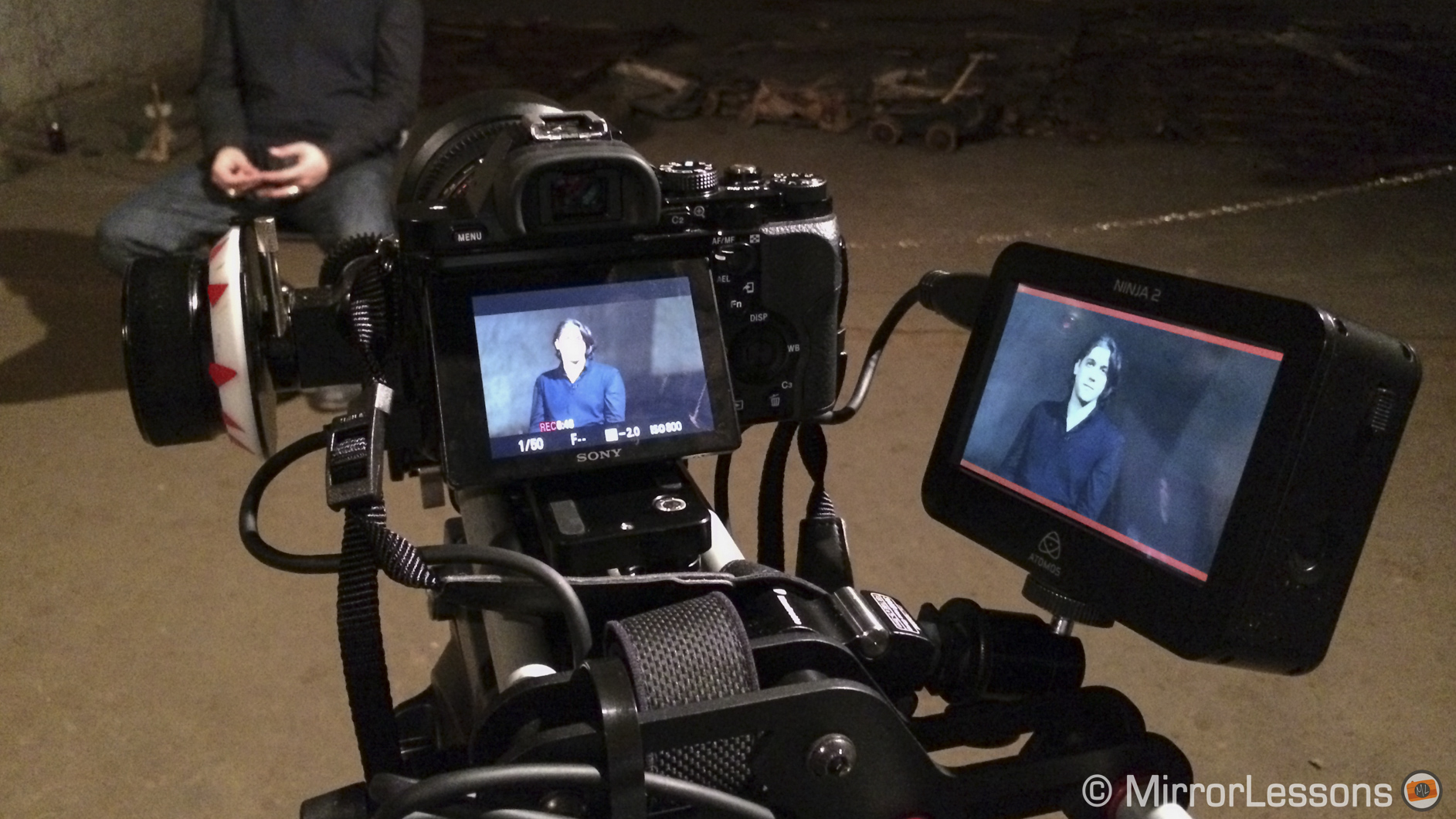In today’s market, the video capabilities of a camera can be as important as its still capabilities. The two words have never been so closely intertwined and thanks to rapidly-developing technology, they are being used in tandem ever more frequently. When the “DSLRevolution” started in 2008, the Canon 5D mark II was basically the only alternative option a filmmaker would choose. Then, as DSLRs evolved, so did mirrorless cameras. Today, I feel confident saying that the latter has more to offer. They incorporate more functionalities, more settings and now all the major brands are taking this segment seriously. It is definitely a very interesting time for videomakers.
In this article I will describe the CSCs I’ve found to be the best for video work, not only from an image quality point of view but from an ergonomics/features point of view as well.
You will find the usual suspects such as the Panasonic GH4 and the Sony A7s, as well as a few other cameras whose specific characteristics make them an interesting alternative.
I should start by saying that I’ve had a lot of experience in video shooting for different types of jobs (commercial, corporate, documentary, short films) and I’ve used more cameras than I can count on two hands: not only DSLRs and mirrorless but also proper camcorders such as the Panasonic AF101 and the Canon C300. Besides the obvious such as IQ and specs, I’ve always appreciated camera that are easy to use and integrate “smart” options that facilitate the filming process. For example, I really loved the Canon C100/C300 because you clearly perceive that it has been designed for camera operators.
But what about mirrorless cameras?
They are certainly cheaper than large sensor camcorders, but one of the biggest limitations is that they’ve been designed with still photography in mind. This often means passable ergonomics and more limited connectivity. Given these limitations, the real question is whether or not these mirrorless cameras can be used straight out of the box, a topic I cover for each camera on this list.
Note that even in the case of cameras that require little to no customisation, accessories that compensate for mediocre ergonomics and lack of built-in features may become necessary to achieve acceptable quality, and there are many to choose from. Two of these accessories are:
- a good tripod with a fluid video head
- an external microphone for ambient or voice recording (most cameras have built-in stereo microphone but the quality is mediocre)
Now that the proper introduction is done, let’s get started on the list.
Chapter I: 4K goodness
The 4K format is making its way towards becoming the next standard video format just like HD that came before it. Unless you already know that your video project will end up on a 4K platform, in my opinion there isn’t a justifiable reason to start shooting in 4K right away. That said, having a 4K capable camera can be useful for the following reasons:
- cropping 4K footage in an HD timeline allows you to have two different shots of the same scene (useful for interviews for example)
- more detail and resolution even when downscaled to Full HD
- an extra spec you can offer if it is required by a client
- archive footage for a future 4K usage
So, what are the best mirrorless cameras for 4K video?
Panasonic Lumix GH4
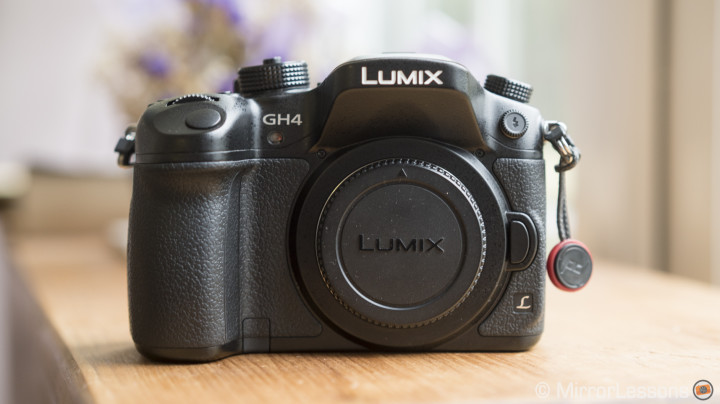
No surprises here. The Lumix GH4 is not only an excellent 4K camera but is also the very best mirrorless camera for video in my personal opinion. Panasonic was one of the first to develop an MILC system for both worlds (still and video) and the GH4 is the most mature product yet. It produces very good results in 4K and Full HD. It is also one of the most complete cameras when it comes to video settings.
The GH4 is excellent for video because:
- It records 4K internally to a regular SD card
- The quality in Full HD is also excellent thanks to the All-I codec with a max. bitrate of 200mbps
- It offers 96fps slow motion footage in Full HD
- The autofocus is good in continuous mode
- It includes Cine-Like profiles inherited from its pro camcorder series
- It includes timecode, colour bars, zebra pattern and many other “video-friendly” settings
- It has the smartest Manual Focus assist (peaking and magnification) I’ve ever used
- It has a Mic input and headphones output
- The LCD screen can be flipped to the side
- It has a good battery life
- It can output a 4:2:2/10 bit signal from its HDMI port if you want to record higher quality on an external recorder. Most of the semi-pro/pro camcorders such as the Canon C100 only output an 8bit signal.
However the GH4 is not perfect for video because it lacks:
- better performance at high ISO (above 1600)
- a cheaper external unit alternative to the YAGH interface
[stextbox id=”text-box”]
About the YAGH interface: with the GH4, Panasonic introduced the YAGH interface which can be attached to the bottom and provides XLR input for audio with manual control dials and uncompressed 4K HD-SDI output and Sync for video. The are two problems however: it is expensive and it doesn’t work with batteries which can limit your mobility. I can see its usefulness for studio or live caption but otherwise it can be uncomfortable. I would have loved to see a cheaper and smaller version, with a size similar to the vertical battery grip with two XLR inputs and only one SDI output. That way, the camera could have been powered by its own batteries and be a complete alternative to camcorders.
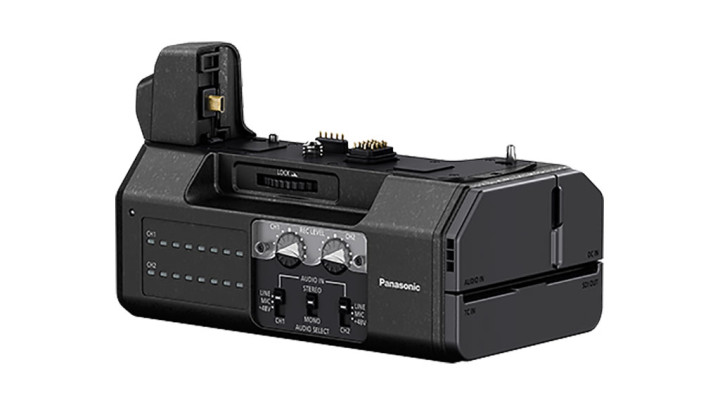
[/stextbox]
Can the GH4 be used straight out of the box? Yes, because the ergonomics and button layout are really good and you have the basic connectors to record decent audio. The built-in viewfinder combined with optically stabilised lenses make the camera easier to use for hand-held shots as well.
- Relevant read: The GH4 complete review for video
Below you can watch one of our videos shot in 4K with the GH4.
Samsung NX1/NX500
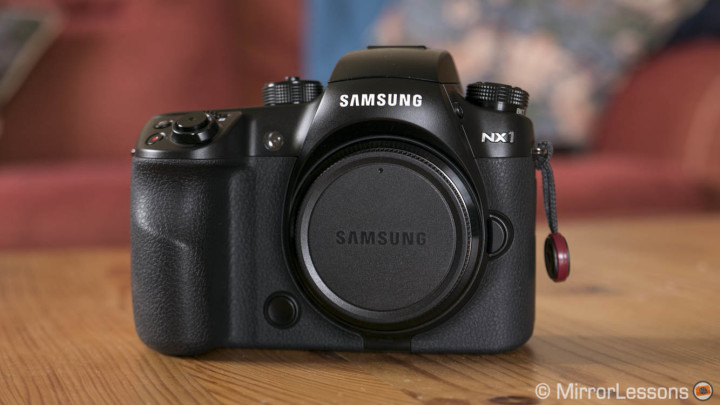
The Samsung NX1 is a camera that impressed me for its video capabilities. The 4K footage is absolutely stunning at low ISOs and the dynamic range is vast thanks to its 28mp BSI APS-C sensor.
The NX1 is excellent for video because:
- It records 4K internally on an SD card
- It has excellent Dynamic Range and great detail rendering
- It has a “C-log like” gamma curve
- It can shoot Full HD at 120fps for nice slow motion footage
- It has an excellent continuous autofocus with select Samsung lenses
- It has an excellent viewfinder and rear monitor which work great with peaking in manual focus
- It includes “video-friendly” settings such as timecode, master pedestal etc.
- It has a mic input and headphone output
However the NX1 is not perfect for video because it lacks:
- A proper movie mode on the camera (the movie preview needs to be reactivated every time)
- More button customisation for video
- Better performance at high ISOs (lots of noise because of the 28mp sensor)
- An H.264 codec in addition to the new H.265 which is excellent but not compatible with anything yet (meaning every video file needs to be converted).
Can the NX1 be used straight out of the box? Yes, because the ergonomics are good and there are the basic connectors for audio. The built-in viewfinder also helps for hand-held shots.
- Relevant read: The NX1 complete review
Below you can watch one of our video shot in 4K with the NX1.
You might have noticed that I also included the Samsung NX500 in the title above and the reason is that it shares the same sensor and video capabilities of its big brother. However it lacks a viewfinder and audio connectivity which mean more accessories to buy for a comfortable shooting experience. But at less than $1000 you get very good 4K quality. The camera can also be an excellent back-up camera for the NX1.
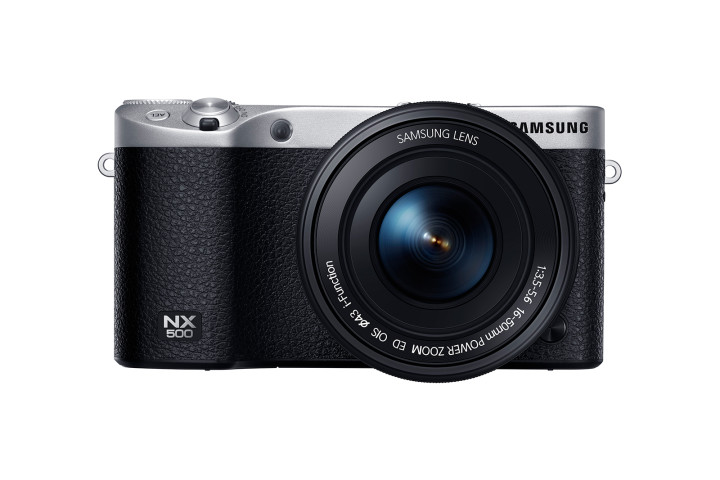
[stextbox id=”text-box”]
4K Photo: the advantage of shooting 4K is that you can extract good quality and usable 8MP JPGs from the video footage. This is a feature that Panasonic is pushing a lot since the release of the GH4. Both the GH4 and the NX1 will allow you to extract a JPG on-camera but you can also do it from your video editing software.
[/stextbox]
Chapter II: Full HD / Low light goodness
Though 4K is spreading, Full HD is still the most common standard for most video productions, so a good HD camera can be enough for most situations especially if it offers other relevant characteristics.
So, what are the best mirrorless cameras for HD video?
Sony A7s
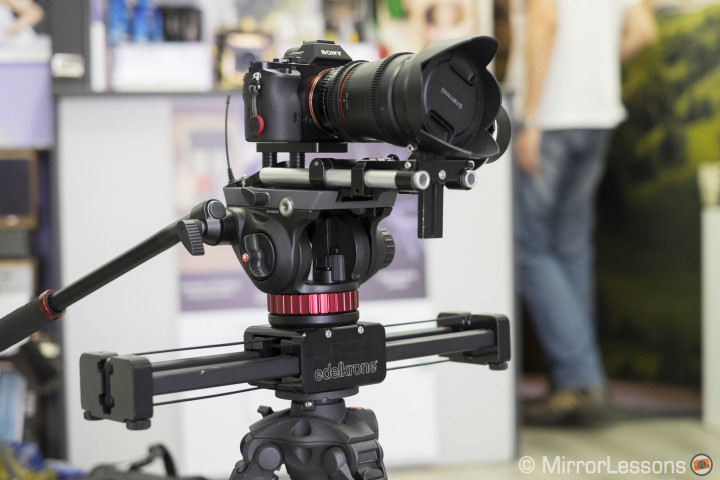
In this category, I give the prize to the Sony A7s. Since its release one year ago, it rapidly became one of the most popular cameras for video shooting. The main reason is its low-light capable sensor, a characteristic that makes this camera unique. It can record great footage in all conditions and can literally see in the dark. The overall image quality is great thanks to its 12MP full frame sensor. Less resolution can be of great benefit for video and the A7s is the perfect example. That’s why I am not surprised that it has been used by many professional crews for short documentaries and other purposes.
The A7s is excellent for video because:
- It has stunning dynamic range
- It is usable up to ISO 51200
- It has a “true” Cine Gamma profiles (S-Log2 and S-Gamut from the Cine-Alta pro camcorders)
- It includes “video-friendly” settings such as timecode etc.
- It has a mic input and headphone output
- It can output a 4:2:2/8bit 4K signal via the HDMI port (but requires an external 4K recorder)
However the A7s is not perfect for video because it lacks:
- Better slow motion capability in Full HD (120fps is in 1280 x 720 only)
- Better C-AF performance
- Better battery life
[stextbox id=”text-box”]
Sony A7s and 4K: you might wonder why I didn’t include the A7s among the best 4K camera since it has 4K capabilities. Well the main reason is that it doesn’t have internal 4K capabilities but rather relies on a external recorder like the Atomos Shogun, which makes the combo more expensive (and the A7s is already the most expensive body on this list). However it is an interesting feature if one day you need to start shooting in 4K as you just have to add a recorder to the camera in order to do so.
[/stextbox]
Can the A7s be used straight out of the box? Yes, because it has the basic connectors for audio and a built-in viewfinder. However the ergonomics are not my favourite for video because the body is really small. Also, the native lenses for the system might not be the best for serious video shooting. You can work more efficiently with some third-party prime lenses like the Samyang Cine-lenses. I wouldn’t hesitate to invest a little to make the camera more comfortable to use for more serious shooting (rig, follow focus).
- Relevant read: The A7s complete review
The video is the Pilot episode of our “The Printing Series” web show. It was shot entirely on the Sony A7s.
Sony A7 mark II
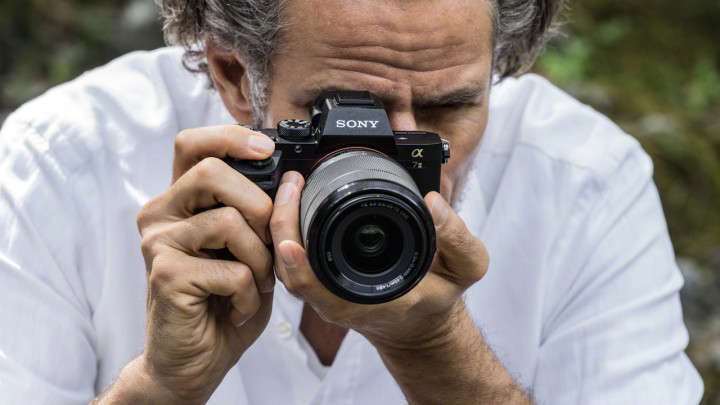
If you are looking for a less expensive full-frame option, then the A7 mark II might be even better if you don’t need that extra sensitivity. It shares many of the A7s’ characteristics except that the sensor has less ISO range with double resolution. But that doesn’t mean that it can’t be enough for most situations. One of my favourite videos made last year was shot hand-held with the original A7 in very low-light conditions. In that situation the A7s would have certainly given me better sensitivity but the A7 mark II would have been of great help as well because of its built-in stabilisation.
The A7 mark II is excellent for video because:
- It has very good image quality
- It has built-in stabilisation (5-axis for Sony E-mount lenses, 3-axis for adapted lenses)
- It has the same S-Log2 profiles and X-AVC S codec as the A7s
- It has a mic input and headphone output
- It has a clean HDMI 4:2:2/8 bit output
However the A7 mark II is not perfect for video because it lacks:
- Better moiré/aliasing performance
- Better C-AF performance
- Better battery life
Can the A7 mark II be used straight out of the box? Yes, because it has the basic connectors for audio and a built-in viewfinder. Also, the internal stabilisation makes it more user-friendly for hand-held shots even without a perfect grip. The ergonomics of the camera have also been improved over the first generation of A7 cameras.
The video below was shot with the original A7 but it is a relevant example since the A7 mark II has the same sensor. It was shot almost entirely hand-held. I rigged the camera on a Manfrotto Sympla rig kit but I didn’t find an optimal balance. With an A7 mark II, I would have kept the rig smaller.
[stextbox id=”text-box2″]
The original A7: since it has the same sensor as the A7 mark II, why am I not listing it as a cheaper solution? Technically I could include it but I prefer the mark II version because Sony got rid of the annoying ghost reflections that appeared around small sources of light on the original camera. It is an issue that only a few websites have mentioned (we did in our A7 review). It isn’t a major flaw but it can be very annoying in some situations.
[/stextbox]
Chapter III: On a budget
Some of the cameras listed above are certainly the best when it comes to video but they are also expensive. What if you are on a budget and wish to start with a less expensive body and invest in more lenses? Or maybe you are at the beginning and prefer to improve your work before investing more money in gear. I selected two different cameras to give you two different low-budget options.
Panasonic Lumix GH3
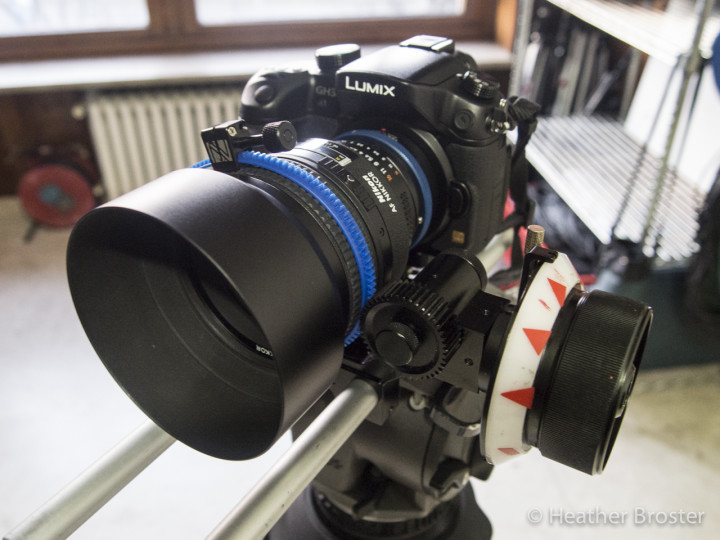
While the GH4 is a big step forward in the Lumix series, the GH3 is still a very valid option for video (I still own one). The only thing it really lacks is 4K capabilities, but as I explained before, 4K is not yet essential. You are more than fine with Full HD.
The GH3 is excellent for video because:
- It has very good image quality
- It has a vast choice of codecs and bitrates
- It has most “video-friendly” settings such as timecode etc.
- It has a Mic input and headphone output
- It has a flipping LCD screen like the GH4
- It has a very good MF assist (peaking and magnification) like the GH4
- It has the best battery life of all the cameras listed in this article.
However the GH3 is not perfect for video because it lacks:
- Better high ISO performances (above 1600)
- Better slow motion capabilities (max. is 60fps).
Can the GH3 be used straight out of the box? Yes, because like the GH4, the ergonomics, button layout and connectors are the same. The built-in viewfinder however isn’t quite as good.
- Relevant read: Using the GH3 for video work
Below you can watch a short documentary shot with the GH3.
Olympus OM-D E-M5 mark II
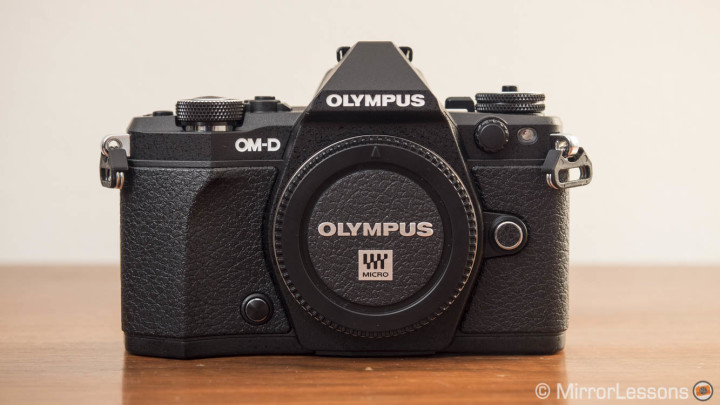
In my eyes the recent E-M5 mark II is a great choice for low budget shooting. It is more expensive than the GH3 because it is newer but still remains cheaper than the other cameras mentioned in this article (except the Samsung NX500). But what makes this camera interesting is its built-in 5-axis stabilisation, the best stabilisation I’ve tested so far for video. It isn’t perfect but once you know how to master it, you can shoot almost “Steadicam-like” footage. This means that the camera is perfect to use on assignments were you need to produce a lot of shots in a short amount of time. In my career I did lots of corporate videos and often you don’t have time to curate every shot as you would like. To speed up the process you can also use more than one camera to capture the scene from different angles. The E-M5 mark II can be the perfect tool because you can do an entire job hand-held and use two or more cameras to capture the scene. You can keep your equipment to a minimum and as a result move faster and optimise your time schedule.
The E-M5 mark II is excellent for video because:
- It has a good selection of codecs and bitrates
- It has stunning in-body stabilisation
- It has a Mic input compatible with phantom powered microphones.
However the E-M5 mark II could be better because it lacks:
- A headphone output (you need the optional HDL-8G grip for that)
- Better quality concerning moiré and aliasing
- Dedicated picture profiles and C-log gamma for video
Can the E-M5 mark II be used straight out of the box? Yes, and that’s mainly thanks to its stabilisation system. The optional HDL-8G grip is advised for better handling.
- Relevant video: 5-axis stabilisation for video explained
Below is a quick video shot with the E-M5 mark II in Turin.
Chapter IV: All-in-One solutions
There can be jobs where speed is of the essence and complete “run and gun” cameras with integrated zooms are more useful. You might not have time to carry different lenses and other accessories, meaning you have to rely on the essential. Up until a few years ago, the best cameras for this purpose would have been the Semi-Pro series of camcorders from different brands like Panasonic, Sony and Canon. They have everything you need including professional audio connectors. However they are expensive and generally have a small sensor (1/3”). But recently cheaper options have come out thanks to a new series of High Quality “bridge” cameras that include a larger sensor. While these sensors are smaller than the ones featured in the other cameras listed in this article, they are still bigger than most semi-pro camcorders. They can also be a low-budget solution as well because they have a non-removable lens so you don’t need to invest in extra pieces of glass.
Sony RX10
The RX10 has the same 1 inch sensor as the RX100 series whose video quality I appreciated on the mark II model. The RX10 features a great zoom lens with a constant aperture and can suit many types of reportage work.
The RX10 is excellent for video because:
- It has a very good sensor that delivers excellent video performance even in low-light
- It has a 24-200mm equivalent zoom range with a f/2.8 constant aperture
- It has a built-in aperture ring with a click-less option
- It has slow electronic zoom capabilities
- It has a Mic input
However the RX10 could be better because it lacks:
- A better codec like X-AVC
- Better quality regarding Moiré and Aliasing
- A better battery life
- A charger (you have to buy it separately or charge it with a USB)
- A headphone output
Can it be used straight out of the box? Yes, this category certainly more than any other. However the lack of a headphone port is annoying.
Below you can watch a video shot by our Italian friend Davide Grimoldi and used with his permission. Davide is a camera operator specialised in mountain shooting. He used the RX10 for several videos made for the Gran Paradiso national park. He explained to us how easy it was to carry such a small camera in the mountains that already had everything built-in. You can also check out his website here.
Panasonic FZ1000
The Lumix FZ1000 is the direct competitor of the RX10 and comes with a few improvements including 4K capabilities.
The FZ1000 is excellent for video because:
- It has a very good quality with 4K recording
- It has an impressive 25-432mm equivalent zoom range (35-592mm in 4K mode) with a f/2.8-4 aperture
- It has 100fps slow motion capabilities in Full HD
- It has 5-axis stabilisation
- It has excellent AF with DfD technology
- It has Cine-Like profiles and other “video-friendly” settings
- It has a Mic input
However the FZ1000 could be better because:
- In 4K the sensor surface is cropped
- Low light performance is not great
- Battery life is not the best
- It lacks a headphone output
Can it be used straight out of the box? Yes, we come to the same conclusion as the RX10.
- Relevant read: although we don’t have full review, my advice is to check the many articles that David Hughes of Soundimageplus has dedicated to this camera. (It is also his favourite camera of 2014.)
Chapter V: B “pocketable” camera
Finally, I’ve reserved the last chapter for second bodies that can be used as a back-ups or second/third units. Some of the cameras I already listed previously can be used together: the NX500 can be an excellent B camera for the NX1, the FZ1000 can be coupled with the GH4, and so on.
Here I would like to mention two cameras that not only have excellent video capabilities but are also very small. They can be used for shots where a small camera can be very useful (drone, camera car, very tight space, etc). Of course here we’re talking about very small bodies that can almost fit inside your pocket so there will be compromises: less connectivity and fewer video settings, just to name a couple.
Sony RX100 Mark II
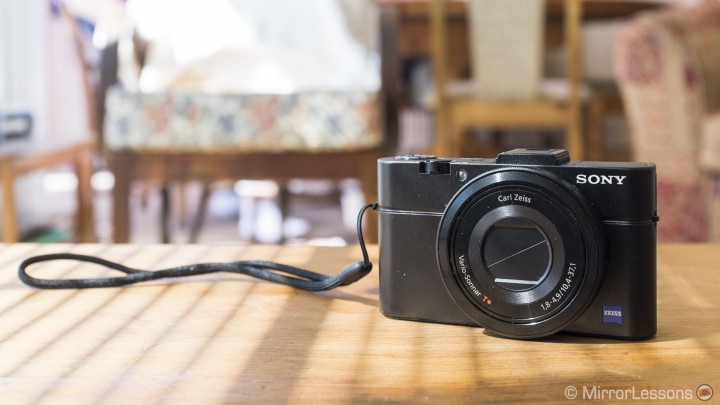
When I used the RX100 mark II a few summers ago I was thoroughly impressed by its video quality despite its small size. It has the same sensor as the RX10.
The RX100 mark II is excellent for video because:
- It produces very good video files
- It has very good low-light performance
- It has a good 20-100mm equivalent focal length (f/1.8-4.9)
- It can fit basically anywhere
- Relevant read: The RX100 mark II full review
Below you can watch a video shot in Wales two years ago.
[stextbox id=”text-box2″]
The RX100 triplets: There are currently three RX100 models and the image quality is very similar. I picked the second version because the lack of a viewfinder is not important in my opinion. It does have a hotshot that can be useful for mounting some accessories if you need to. Also, since it isn’t the latest model, it is cheaper as well.
[/stextbox]
Panasonic LX100
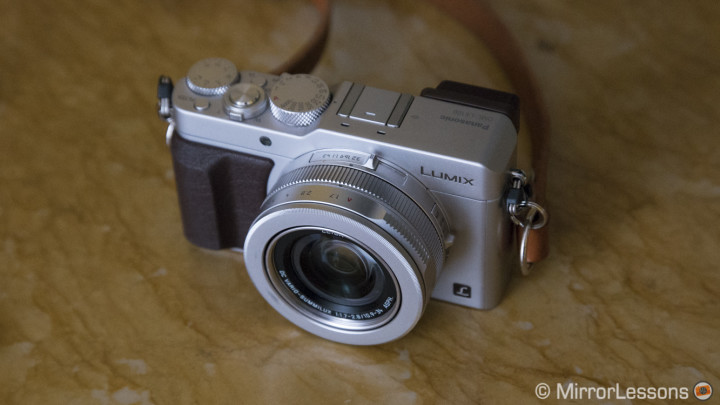
The LX100 is a very good compact camera and if you own another Lumix, it works as the perfect second body. It can shoot 4K so it is an excellent companion for the Panasonic GH4 as well.
The LX100 is excellent for video because:
- It can shoot video up to 4K
- It has a bright f/1.8-2.8 24-75mm lens
- It has a nice interface with manual dials.
- Relevant read: our second chapter of the LX100 review and this excellent video test by Eric Cote of Mirrorless Journey.
Panasonic GM1/GM5
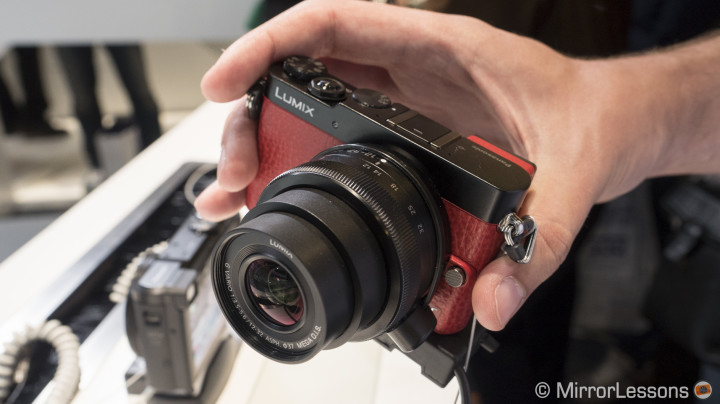
The reasoning is the same as the LX100 but the GM1/GM5 cameras have an interchangeable lens mount. As such, if you are already using Lumix cameras for your work, these very small bodies might be more interesting as you can easily mount a small MFT lens (like a fisheye for example).
The GM1/GM5 are excellent for video because:
- They are very small
- They are compatible with all m4/3 lenses
- They have good image quality in Full HD
Canon EOS M
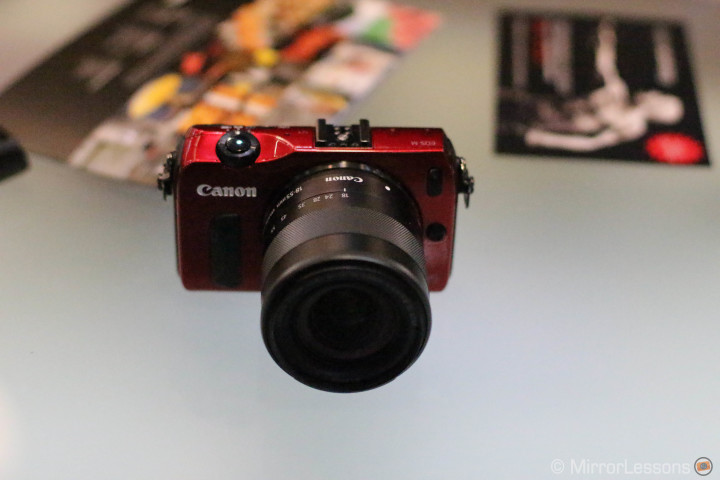
I’m mentioning the Canon EOS M because I happened to use it for a job in Italy last year as a B camera with a Canon 7D. I would recommend it mainly to filmmakers who are already using Canon DSLR cameras and might need a smaller companion.
The EOS M is excellent for video because:
- It has a very good image quality that matches APS-C EOS DSLRs
- It can work with EOS lenses via a dedicated adapter
Conclusion
I tried to make this list as exhaustive as possible so as to give you different options to suit your style or the type of shooting you need to do. If I had to recap this list, I could also categorise it like this:
- Short-films, documentaries, music videos: Sony A7s, Panasonic GH4, Samsung NX1
- Corporate work: Olympus OM-D E-M5 mark II, Panasonic GH3
- News and “run & gun” reportage: Sony RX10, Panasonic FZ1000
When it comes to video, there are many other things to take into consideration. You must carefully select the right accessories and lenses, and think about the sensor size and crop factor. The interesting thing about Micro Four Thirds for example is that the 2x crop factor gives you more reach with telephoto lenses.
Don’t forget to consider your post-production workflow either. Do you need to shoot at the highest quality possible? Then the A7s and its full-frame sensor or the GH4 and its 4:2:2 10 bit HDMI output (if you’re willing to spend the extra money on an external recorder) are probably the best solutions. Do you need to edit your work really fast? Then the NX1 may not be the answer, as the H.265 codec is not an option yet.
In the end, all these cameras are great, but what they truly all have in common is that they’ll make your filmmaking bag compact and easy to carry, something worth considering if you’re a frequent traveller.
Did you like this list? Do you have another camera to suggest? Leave a comment below!
